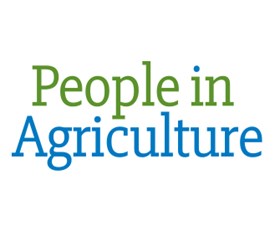Managing Farm Payroll

Introduction to Managing Farm Payroll
There are a number of documents that need to be kept as a record your management of your employees and payment for their labour. The management and recording these documents we refer to as Payroll. Below are detailed the different records that you will need to keep along with templates for Pay Slips, Recording Tax, Rosters, Superannuation and Timesheets.
Work Rosters
A roster is a list or a plan that shows when people who work on the farm will be on duty. Rosters are typically used to organise time off and to delegate tasks. A roster can be a formal computer-generated spreadsheet or written on a year planner, calendar, whiteboard or a roster template
The success of a roster depends on the planning that goes into it and commitment by everyone to make it work, it also needs to be as fair and reasonable if you expect people to stick to it.
Under the Pastoral Award 2020 (clause 27), Horticulture Award 202 (clause 28), and Cotton Ginning Award 202 (clause 30), employers are required to consult with employees before making any changes to regular rostered hours of work.
You need to consider a number of factors when planning a roster:
- How many hours is each person on the farm required to work (employees and family members)?
- Have you left enough time for breaks between shifts?
- Have you allowed for meal breaks?
- Have you made allowances for employees taking leave?
- Do start and finish times suit the employees and the family members working of the farm?
Awards also contain provisions relating to flexible working arrangements:
Pastoral Award 2020 clause 5 & 6 - Web page
Horticultural Award 2020 clause 6 - Web page
Cotton Ginning Award 2020 clause 6 - Web page
Information about meal breaks or rest breaks - Web page
Introduction to the NES - PDF
Flexible Working Arrangements - PDF
Roster template – Word Doc
The Horticulture award 2020 (clause 13.3g) requires employers to keep a roster at the workplace which specifies the times each shift will commence and finish and which shifts are deemed to be day shifts.
Record keeping
Employers need to make sure they keep records in accordance with both federal and WA State laws.
Employees have the right to inspect and copy their own employment records and to know where they are kept. If an employee asks to see his or her employment record then you must provide it for them within 3 working days in person, or within 14 working days if the records are to be posted.
Workplace inspectors are also entitled to inspect and copy employee records and documents at a workplace where an inspection is being conducted. You may also be required to produce any documents that may not be at the workplace within 14 days of receiving a written request. If workplace inspectors need to keep any documents or records, make sure you copy the documents before they are taken away. Below is a list of some of the important records you need to keep. There may be other records specific to your farm / situation that you are required to keep. Check with your industry advisor if you are unsure.Employee records should include the information listed below and be filled in during an employee Induction and updated, as required.
- Employees Details Form
- if you and your employee have agreed to an Individual Flexibility Agreement, a copy of the agreement.
- leave taken and any Leave Application forms
- leave balance
- a record of the employee’s Super Fund Choice and the date they made that choice
- a copy of the employee’s Tax File Number Declaration
- signed copy of the Offer of Employment
- signed copy of any induction or WHS training received
- Payslips; for a full list of information required on payslips and a sample payslip, download the Model Payslip and Information Sheet.
- if overtime is worked, a record of the number of hours worked, or the starting and finishing times of the overtime.
Super fund choice form – PDF
Model Payslip and Information Sheet - Word Doc
Workplace OHS Legislation - Link
Tax and superannuation
Tax
When you pay employees, you need to withhold tax from their pay and send these amounts to the Australian Taxation Office regularly. For each new employee, you will need to:
- give them a Tax file number declaration (NAT 3092) to complete and return to you (note – this form is updated annually so make sure you have the latest version before giving it to your employee)
- complete Section B of your employee’s Tax file number declaration
- register for PAYG withholding (if you haven’t already)
- forward the completed original of the Tax file number declaration to the ATO within 14 days of the employee’s start date
- keep records of all tax deducted and send payments to the ATO
- issue Payslips and payment summaries (group certificates)
The Australian Tax Office have a range of tax tables and a tax withheld calculator tool to help you work out the amount of tax you need to withhold from your employees. There is also an app for the ATO that acts as a simplified version of the calculator and can be downloaded through Google play, Apple App store or Windows store.
If you don’t have access to the internet, or need more information about the correct amount of tax to withhold, phone the Australian Taxation office on 13 28 66.
Superannuation
Under the superannuation guarantee law you must pay super contributions for your eligible employees, at a minimum rate of 9.5% of their ordinary time earnings for the current payroll year until 30 June 2021. After this, the superannuation guarantee increases by 0.5 % points each year until it reaches 12% (see table below, source ATO).
You have to make payments at least four times a year and the cut-off dates are 28 days after the end of each quarter.
|
Date |
Super rate guarantee |
|
1 July 2002 – 30 June 2013 |
9% |
|
1 July 2013 – 30 June 2014 |
9.25% |
|
1 July 2014 – 30 June 2015 |
9.5% |
|
1 July 2015 – 30 June 2016 |
9.5% |
|
1 July 2016 – 30 June 2017 |
9.5% |
|
1 July 2017 – 30 June 2018 |
9.5% |
|
1 July 2018 – 30 June 2019 |
9.5% |
|
1 July 2019 – 30 June 2020 |
9.5% |
|
1 July 2020 – 30 June 2021 |
9.5% |
|
1 July 2021 – 30 June 2022 |
10% |
|
1 July 2022 – 30 June 2023 |
10.5% |
|
1 July 2023 – 30 June 2024 |
11% |
|
1 July 2024 – 30 June 2025 |
11.5% |
|
1 July 2025 – 30 June 2026 and onwards |
12.5% |
Superannuation is only paid on ordinary time earnings. This means that superannuation is not payable on OVERTIME if it can be ‘separately identified’ from ordinary hours. However, if you are paying a flat rate of pay, then you have to pay superannuation on all hours worked. If you have an IFA, you may not have to pay superannuation on all hours worked - read more about IFAs
You don’t have to pay superannuation to:
- employees paid a salary or wage of less than $450 in a calendar month;
- employees under 18 years of age and working less than 30 hours per week; or
- employees paid to do work of a domestic or private nature for not more than 30 hours a week, for example, a part-time nanny or housekeeper.
The Australian Taxation Office has a lot of information to help small business and employers. Have a look at the information on Super for employers and Small Business Superannuation Clearing House’. You can also download a copy of the Superannuation Standard Choice Form from the ATO site.
Note that after the 1st July 2016, everyone must use the Superannuation Clearing House.
Employees who are eligible for super can choose the fund you pay into. You should give employees a copy of the Superannuation Standard Choice Form which lets them tell you the details of their preferred super provider.
If they don't make a choice, you must pay their contributions into your employer-nominated or default fund. All awards contain details of the default funds for that industry. Note: after 1st July 2016, everyone must use the Superannuation Clearing House (see box above).
The definition of an employee for superannuation purposes is different to the common law definition of employee. Some Contractors you use on the farm may be included.
Super for employers
Small Business Superannuation Clearing House
Timesheets
By law employers only have to keep records of hours of work and starting and finishing times if overtime is worked or if the employee is a casual employee or an irregular part time employee with a guaranteed pay rate for the hours worked. However it is advisable to keep accurate records of all hours worked. Keeping accurate records is important for other reasons too. The hours a person works on average each week can have a significant impact on their work-life balance.
Unreasonable hours and a feeling of being overworked and under appreciated can lead to poor morale and make it harder to keep or motivate your employees. The Modern Awards and National Employment Standards provide details on ordinary hours of work and overtime. (See also How do I Train and Grow my Team for more information about retaining employees and on-the-job morale.)
There are a couple of simple ways of keeping track of employees’ hours of work:
- keep a time and wages book (click here for a sample); or
- use our Time Sheet Template
Payslips
The list of information you have to include on a pay slip can seem a bit scary at first glance. However, if you have followed the Induction Checklist and Employment Checklist, you should have all the documents you need already. You can use the Model Payslip provided and / or an excel spreadsheet or manual sheet from your Accountant to help you. See the Model Pay Slip and Information Sheet in the resources section below for a complete list of all the information you must include on employee payslips.
It’s good to show leave balances on employee pay slips but you don’t have to do this. However, you must tell your employees their leave balance if they request it. Calculating leave can be so much simpler if it is done regularly and included on a pay slip.
You can only deduct money from an employee's pay if the employee has agreed to it in writing and the deduction is for the employee’s benefit. Use this Authority to Deduct Form. Employees who are under 18 years must have the form signed by a parent or guardian.
You must give all employees a pay slip within 1 day of paying their wages
There are penalties for failing to provide pay slips, or for not including the required information on pay slips. Serious or ongoing breaches may result in court action.
You can provide payslips electronically or on paper but electronic payslips need to be emailed to employees individually, not just stored where they can be accessed.
Talk to your accountant or bookkeeper about setting up a computerised accounts package, such as MYOB, Xero or Quickbooks. Farmers who use electronic payroll say that the time saved in keeping employee pay and leave records outweighs the cost tenfold. You can usually get a free trial version of most packages so make sure you get one that suits your needs.
Authority to deduct form – Word Doc
Model Payslip WA only – Word Doc
Model Payslip - Word Doc





